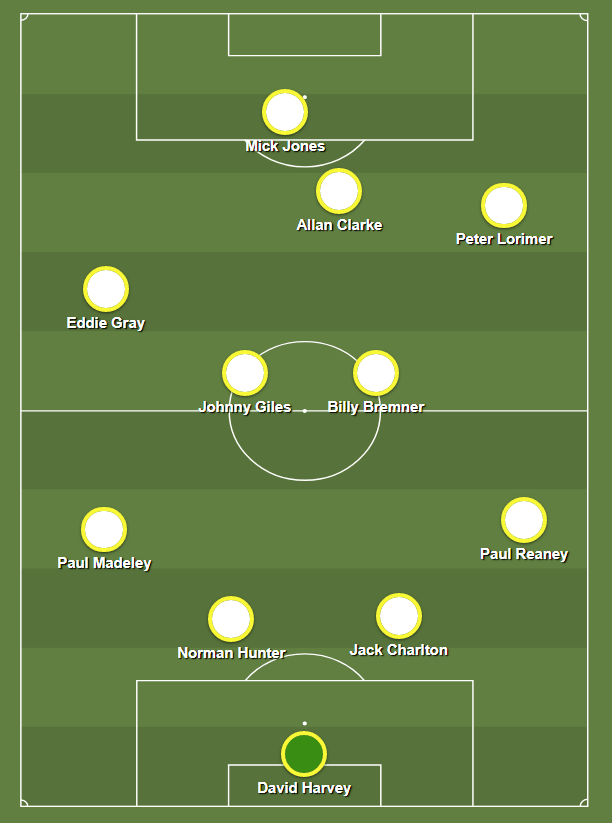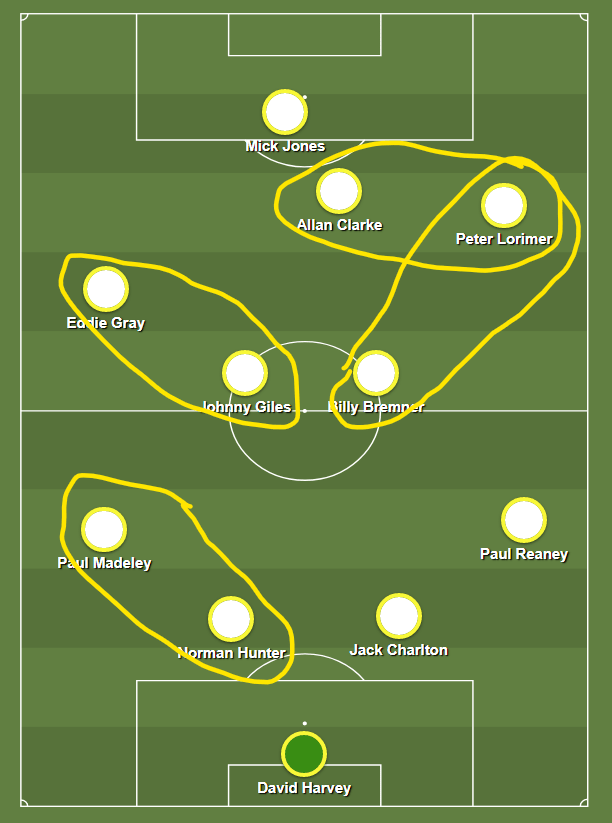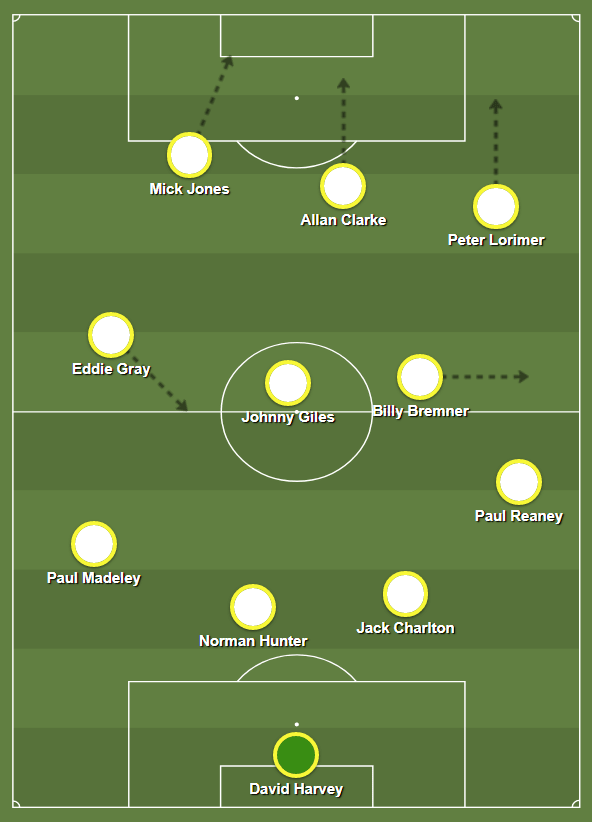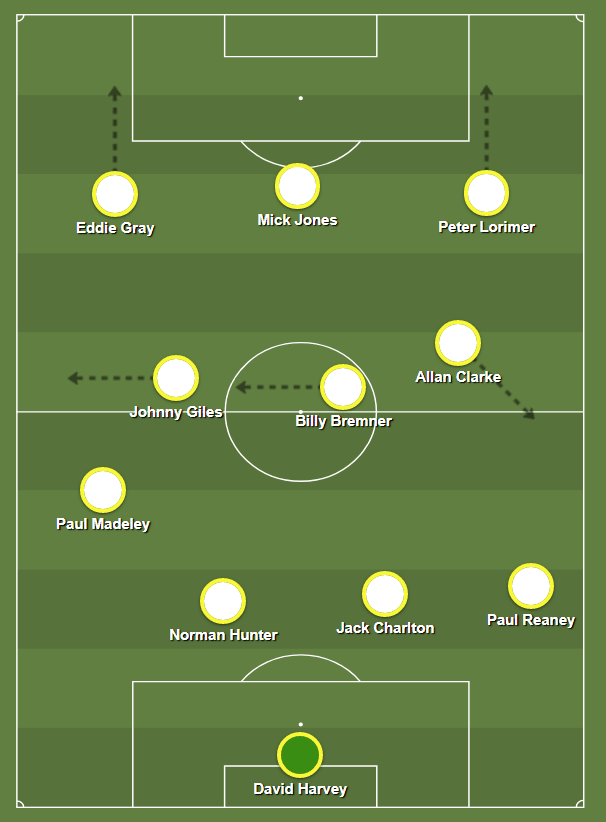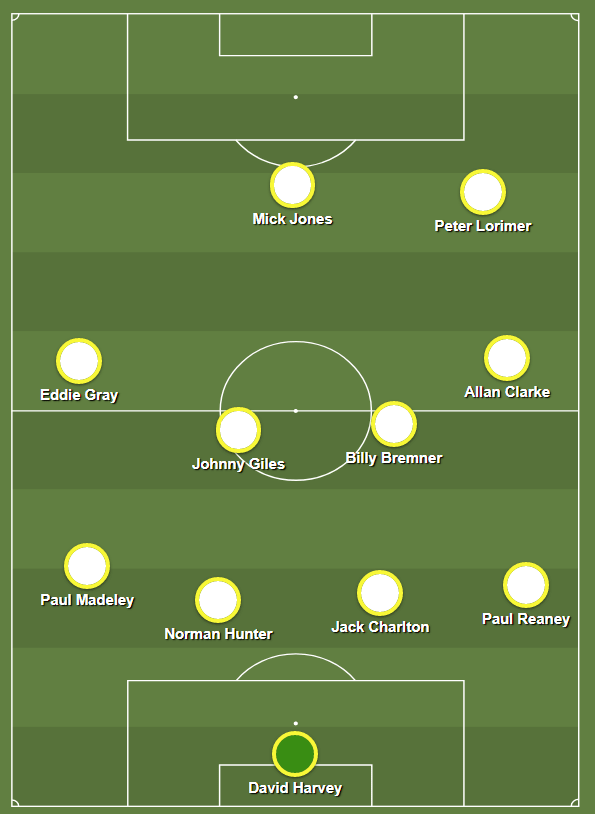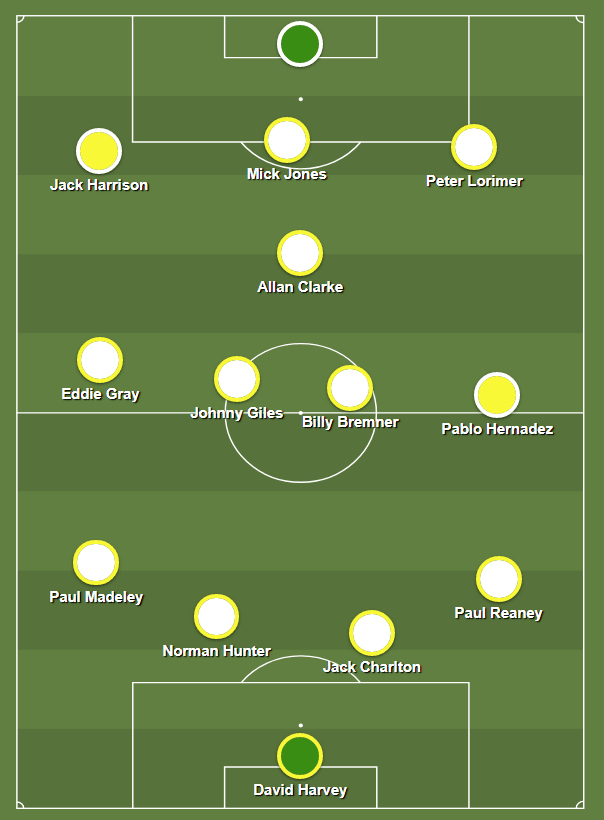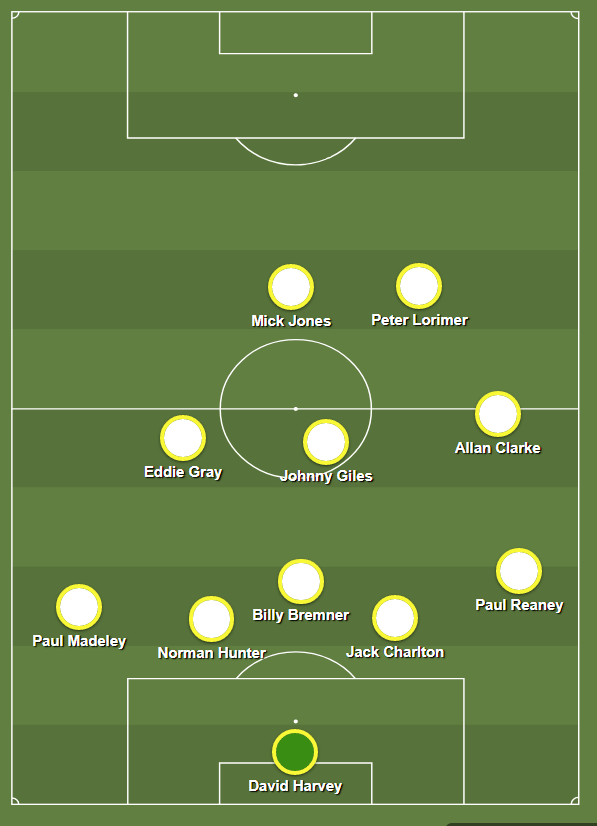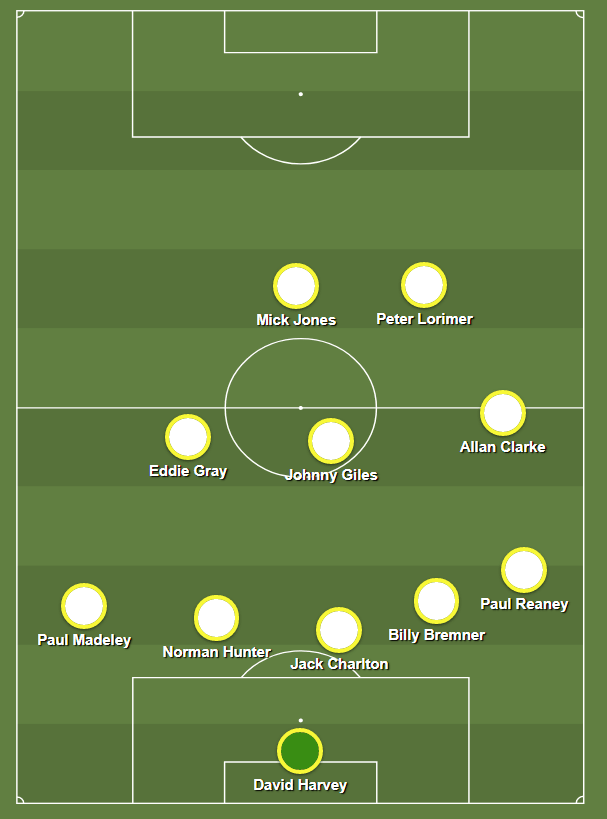If you haven’t watched the game it is available here: https://twitter.com/AllStatsArentWe/status/1253364962728333312">https://twitter.com/AllStatsA...
If you want to watch along with Jon and Josh in your ears, you can find the relevant podcast here: https://twitter.com/AllStatsArentWe/status/1253364960375312385">https://twitter.com/AllStatsA...
Having never watched a full game from the Revie era, only watching clips here and there of famous moments and passages of play, I was quite interested to see how the game would unfold tactically.
First off, a note about the backpass rule - namely, its non-existence. Of course, this isn’t a profound point: many of us remember football before the backpass rule was brought in, but this game made it quite stark just how defensive it made the game.
Defences sat back. Midfields sat back. And chances were far from flowing. In this game, Billy Bremner and Johnny Giles - playing in a double pivot - rarely get forward at all.
No doubt, this is because it becomes a lot easier to defend in deep areas, knowing your goalkeeper can attack the ball as and when. There is a moment where George Graham lets the ball drop at his feet in the penalty area for Geoff Barnett to dive on it.
The result is that Leeds played with an interesting formation where the centrebacks and the central midfielders form a sort of defensive square flanked by the fullbacks but with the wingers playing ahead of them.
Here you can see Giles and Bremner’s double pivot; Gray and Lorimer’s wide attackers; Allan Clarke as a 10 and Mick Jones as the classic centre forward.
However, the formation was much less stringent than you might expect. Again, a note: it’s unclear how much of this was specifically ‘tactical’ - by which I mean, a planned rotation such as the ones we see in a Bielsa side today.
Where Bielsa micromanages players to interchange according to set patterns, these rotations seem more ad hoc: if a player moves out of position, then his teammate knows how when and where to fill in.
This happens in smaller units on the field: if Norman Hunter comes out to the LB position, Paul Madeley or Johnny Giles fills in for him. Here are some of the commonest switches I saw through the game:
On the macro-level, in possession, Leeds would look to play on the break and would, in these moments, look to move into a sort of 4-3-3 which structured itself dependent on the side the ball was on.
On the right, Lorimer would become an outside right, Clarke would push up into the centre forward slot and Jones would push out wide left:
As you can see, the midfield would slide to accomodate with Gray forming the outside midfielder on the left in a three.
Alternatively, with the ball on the left, Gray would now become the outside left, Jones would move central but, rather than Clarke taking up Lorimer’s position and Lorimer dropping, Clarke slotted into the left side of the midfield three:
I don’t know if this is because Lorimer was carrying a knock. I’d have to watch more matches from that era to be sure. But Lorimer did seem as though he was limping a bit particularly in the second half.
In fact, in the second half, particularly after the goal, Clarke essentially moved to a right wing position and Lorimer played as the outside right for the rest of the game:
In terms of specific attacking play, Leeds didn’t look to whip early balls in from wide areas, instead trying to hit the byline before attempting to cross either high or low: the goal itself came from Jones hitting the byline on the right
and finding Clarke in the box from a lofted cross.
Alternatively, Leeds also played quite direct through the middle: in the first half, Lorimer, for example, was quite dangerous - cutting inside and looking to get shots away.
Alternatively, Leeds also played quite direct through the middle: in the first half, Lorimer, for example, was quite dangerous - cutting inside and looking to get shots away.
From a deeper midfield area, Johnny Giles seemed desperate to dink throughballs in between the defence and the keeper, none of which really came off.
Given the defensive nature of the game, Leeds’ chances in the first half came from headers almost exclusively with a few long shots played in: the threat of Lorimer in that regard was obvious. He was always an out-ball option at the edge of the box if the attack broke down.
In the second half, particularly late on with Arsenal a goal down and only one substitute used (for the opposition), the game opened out. There were a couple of opportunities where Leeds had good chances, matching up the defence 1 to 1.
Clarke e.g. takes a shot where he should have laid the ball out to Lorimer late on.
I’m reluctant to make comparisons to Bielsa’s Leeds but there was a sense in which Revie’s Leeds in this game played a mirror image to Bielsa’s: the play goes down one side in particular but it’s the right rather than the left.
I was amazed at how deep Gray played. He drops in to cover for Madeley at times whereas Lorimer barely dropped into his own half. Compare that with Harrison on the left who most of Leeds play goes through with e.g. Pablo sitting deeper on the right.
In part, Gray’s depth was to free Madeley up to go foraging forward - something he did with a level of freedom that was wild: think inverted full backs on speed. Reaney, on the other side, was much more conservative and only really overlapped (which he did on maybe two occasions)
In defensive situations, Leeds looked fairly modern - a 5-3-2 was adopted with Bremner dropping in between the centre backs or in between the ball-near centre back and the ball near full back
Of the two centre backs, Hunter was the more mobile (although it should be said, Charlton was 37 at the time) and the better on the ball so he would often push forward with the ball (a la Madeley) and, again, Bremner or Madeley would cover
with Gray dropping back into the LB area where needed.
This was towards the end of the Revie era and one thing that struck me was how familiar the players were to each other: everyone knew how the adjacent teammates would play or move and the rotation that you get -
as I said before - was one of familiarity: a unity of purpose and an understanding of how to function as a whole.
In this sense, the Revie-era team were no different to the Bielsa team. Of course, it’s all the more impressive that Bielsa managed this with the team he did in two season where Revie spent over a decade with some of the best players in England to achieve this.
Which isn’t to take anything away from Revie, of course. Simply to remark on how improbable Bielsa is.
I thoroughly enjoyed watching this game and feel much more affinity to the Revie-era team than I had before. They were quite clearly the best team in England at the time and it was impressive to see what Revie achieved 50 years ago.
If you like this, please share it. If you have any other suggestions for Watch Along podcast episodes or tactics threads, let us know.
Be safe!
Be safe!

 Read on Twitter
Read on Twitter